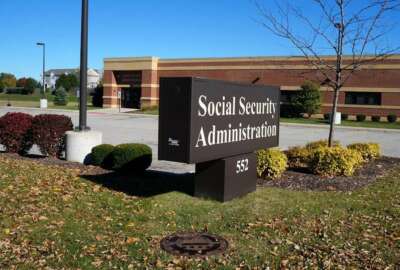January COLA or January raise: Why not both?
Every time there is a federal pay raise AND a cost of living adjustment for retirees, some folks figure they can get a piece of both. While it sounds good in th...
You don’t reach retirement age in the federal government without learning your way around many obstacles. And how to navigate sometimes conflicting or confusing rules and regulations.
Which is why every time there is a federal pay raise AND a cost of living adjustment (COLA) for retirees, some working folks figure they can get a piece of both. Retire late in the year to qualify for some of the COLA and/or retire in early January so some of their final pay and annual leave will be at the new higher rate.
While it’s a good plan, in theory, it has one important but fatal flaw. It won’t work.
Bottom line is that the retiree raise is based on the rise in living costs from the current quarter (in this case July, August, September of 2021 over the same time period last year. Since the COLA is effective Dec. 1 (first reflected in January annuity payments), it means the would-be retirees weren’t retirees for any, all or most of the inflation measuring period. COLAs are for people who are actually retired.
As benefits expert Tammy Flanagan explains it:
A COLA effective for December of the current year is equal to the percentage increase (if any) in the CPI-W from the average for the third quarter of the current year to the average for the third quarter of the last year in which a COLA became effective. If there is an increase, it must be rounded to the nearest tenth of one percent. If there is no increase, or if the rounded increase is zero, there is no COLA for the year. The latest COLA is 5.9 percent for Social Security benefits, military retirement pay and CSRS (Civil Service Retirement System) retirement benefits. Benefits will increase by 5.9 percent beginning with the December 2021 benefits, which are payable in January 2022. Due to the “diet” and delayed COLA for FERS (Federal Employees Retirement System), those who are eligible for the 2021 COLA will receive 4.9% in their January FERS retirement benefit (remember there is no COLA on the FERS supplement and most FERS retirees do not receive a COLA until after they reach 62).”
The same disappointing logic applies to plans of people who time their retirement for early January. They hope to get the last check, or part of it, and some or all of their payment for unused annual leave at the 2022 rate. Again, a non-starter. Those who retire on December 31, 2021 will have their lump sum annual leave paid at the 2022 pay rate since the rule is that the lump sum payment will equal the pay the employee would have received had they remained employed until expiration of the period covered by the annual leave.
Since 2022 is a pay raise and COLA year, we got lots of requests from retirement-eligible workers about how to proceed. Could they get one or both benefits by timing their retirement? As usual, when the questions get that complicated, I turn to benefits expert Tammy Flanagan. She’s a long-time, recently retired federal benefits expert. She now operates her own consulting operation, which has helped lots of active and retired feds get the most out of their excellent, but often tricky, benefit package. Typical of the questions I got this year is this one from an Interior Department worker. I passed it on to Tammy.
First, his question:
Hi Mike
I have enjoyed following your Federal Report for many years and I have learned a lot.
I thought I understood the timing for my retirement (setting a date).
Now I have an urgent question.
I had decided to retire 1/29/2022 to take advantage of the potential 2.7% 2022 COLA on federal salaries, near the last day of a month and end of a pay period.
I think I assumed that I would also benefit from the retirement COLA of 5.9%.
However, now I think I may have really made a big mistake and if I retire on 1/29/2022 I will miss the retirement COLA of 5.9% (in my case about $2,400) for the rest of my life.
That is a lot bigger benefit than working for two more pay periods at a slightly higher rate.
The question is should I retire on 12/31/2021 or 1/29/2022 to maximize my benefits?
Thanks,
Tom.
So I passed his question on to Tammy asking her if any benefit was possible or if he would miss the boat twice.
Tammy’s reply:
Hi Mike.
It is correct that this employee will not get any of the 2021 COLA since they weren’t retired in 2021 for any time before 12/1/2021. The January pay raise won’t help them much either for the high-three average salary computation since it will be in effect for less than one month out of 3 years. By retiring at the end of January, the value of FEGLI life insurance will be worth approximately 2.7% more and the FERS benefit will be a few dollars more every month due to having another month of service and a few weeks at the higher 2022 pay rate. In addition, the lump sum annual leave payment for leave eligible for carry-over into 2022 will be paid at the 2022 pay rate… that’s really about it. To provide more assistance, I would need to know more about things like age, retirement coverage and other details that could impact the retirement benefit as well as TSP and Social Security benefits.
You can always reach Tammy at Tammy@retirefederal.com.
Nearly Useless Factoid
By Alazar Moges
Over 300 species of fruit — including mangoes, bananas and guavas — depend on bats for pollination.
Source: Forest Service
Copyright © 2024 Federal News Network. All rights reserved. This website is not intended for users located within the European Economic Area.
Mike Causey is senior correspondent for Federal News Network and writes his daily Federal Report column on federal employees’ pay, benefits and retirement.
Follow @mcauseyWFED






